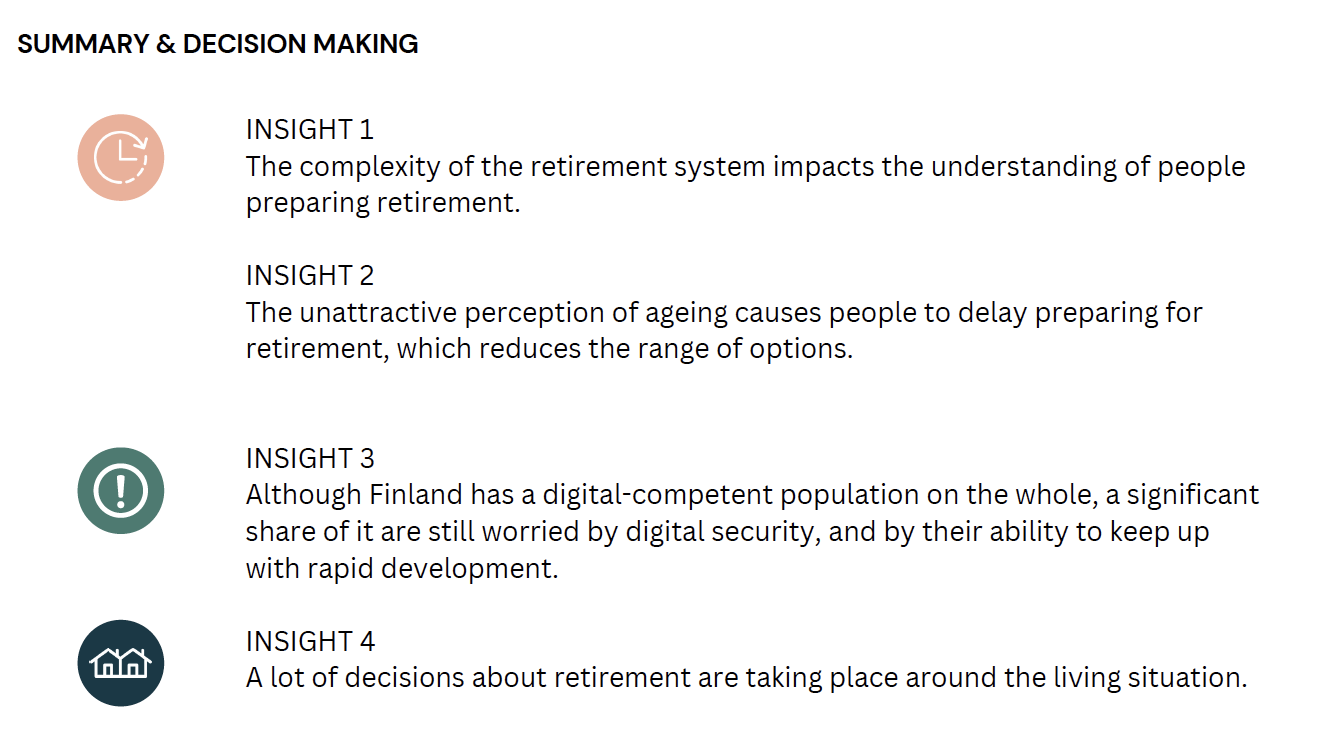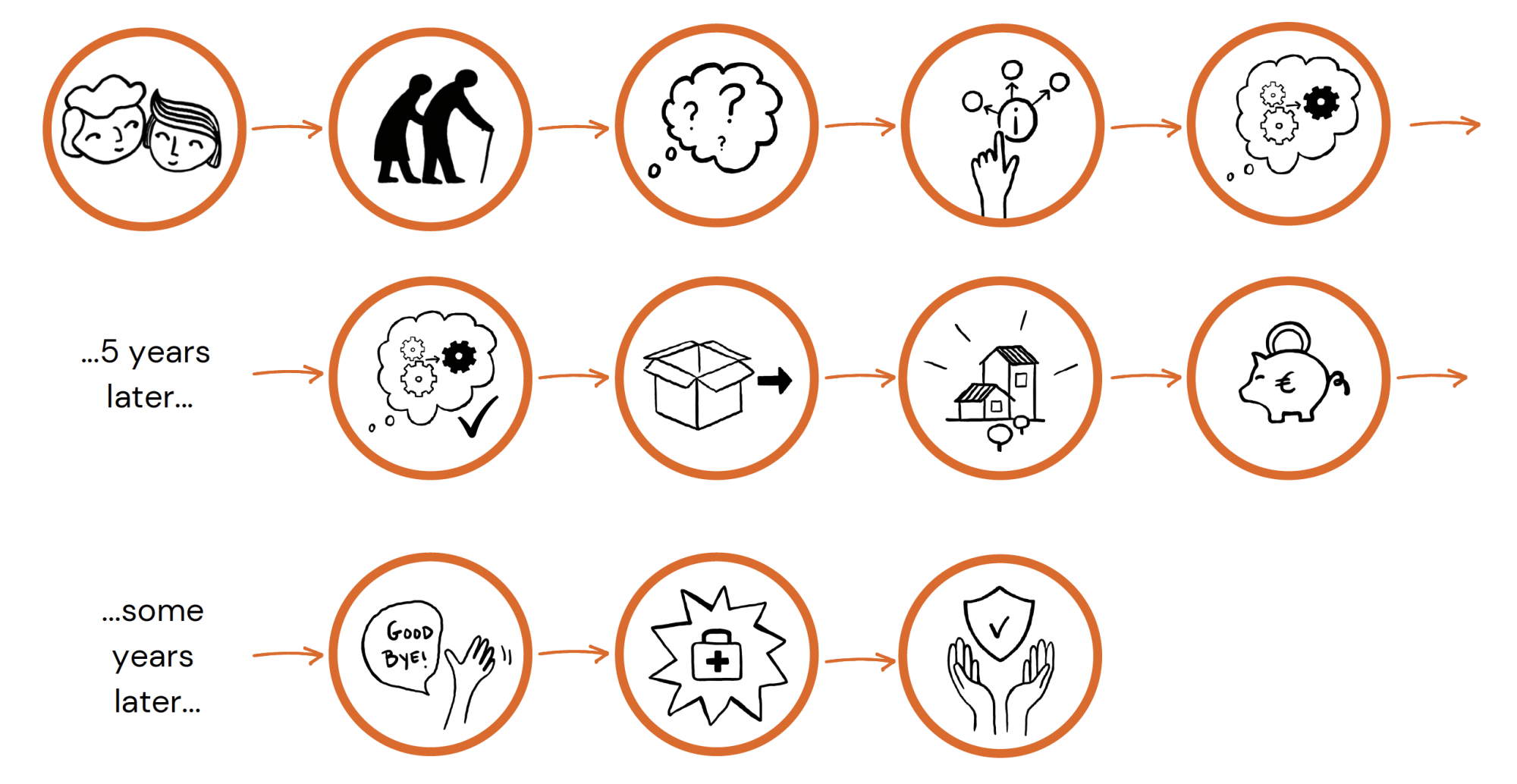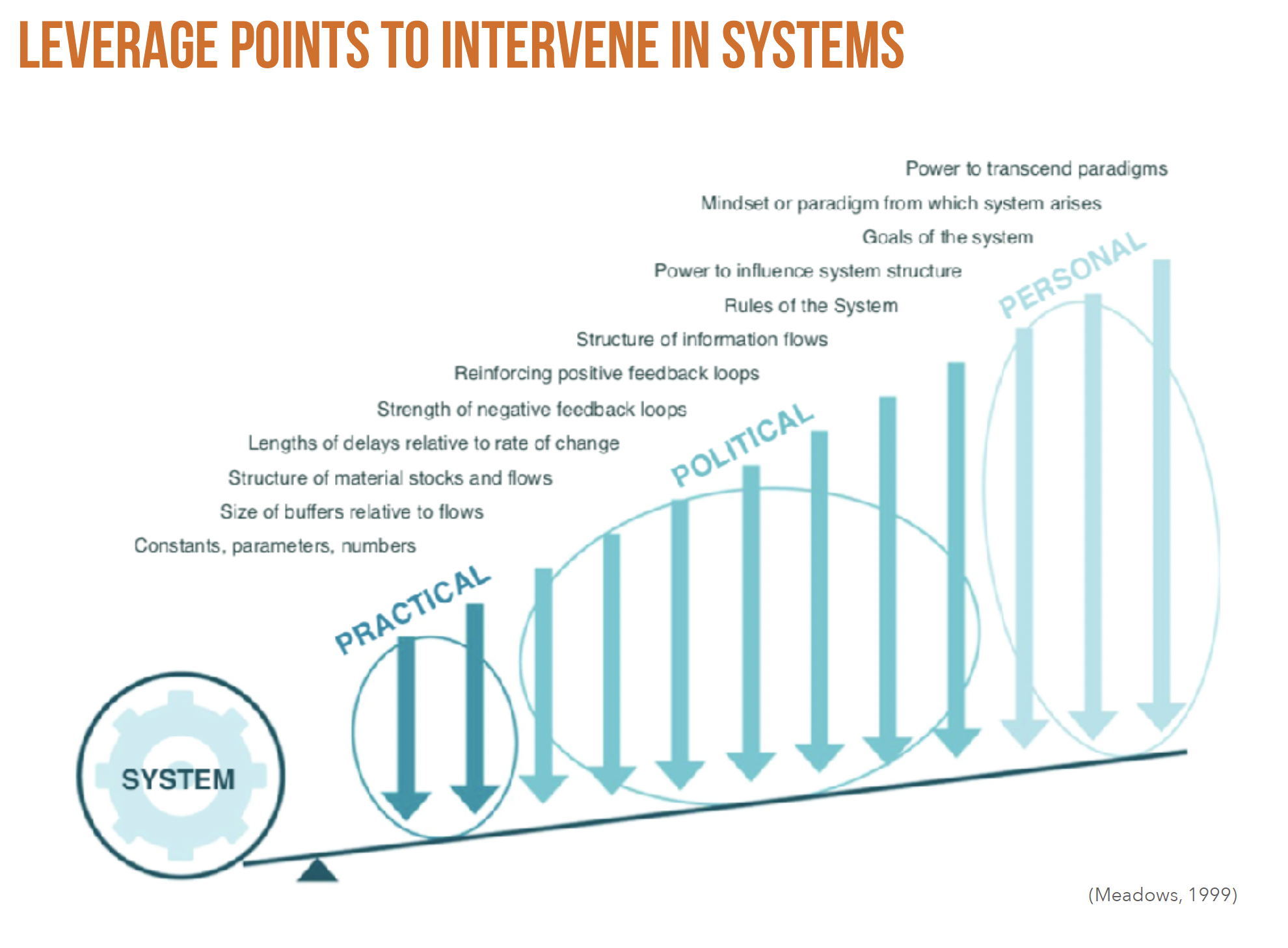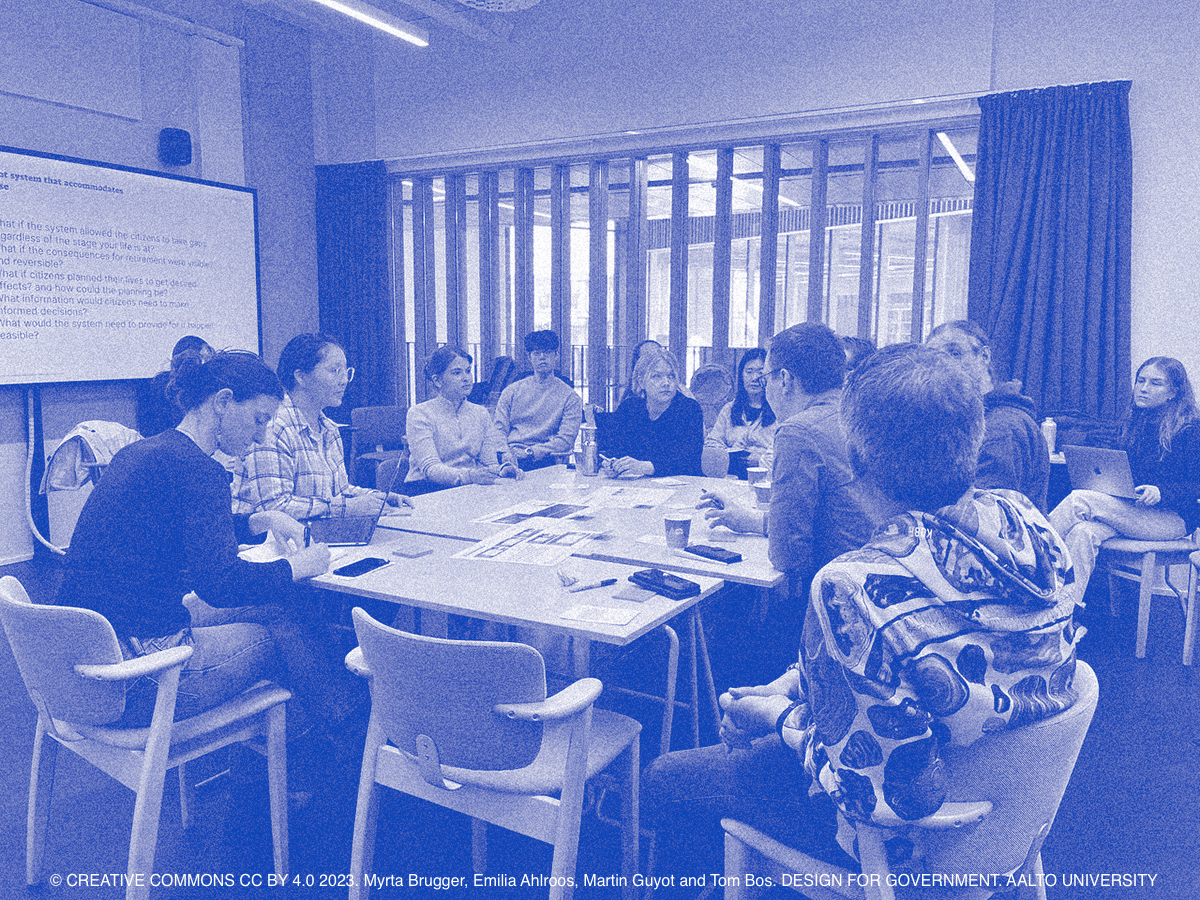This blog post reports on work-in-progress within the DfG course. The post is written by group 1C working in collaboration with the Digital Population and Data Services (DVV) and the Ministry of Finance (VM) on the project ‘Life events for a dignified old age’. The group includes Myrta Brugger and Emilia Ahlroos from the Collaborative and Industrial Design program, Martin Guyot from the Creative Sustainability program, and Tom Bos from Aalto Business School.
Written by: Martin Guyot
Time to narrow the scope for further development
Now that the mid-term presentation is over, the upcoming period is meant to be a time of decision making. This first involves deciding which insight to focus on and which problem to address. Indeed, ahead of the presentation we clustered our ideas into four different insights and presented them to our partners to get their feedback.

Fig 1. Summary of the different insights presented during the mid-term presentation to facilitate decision making in preparation for the second diverging phase
We finally chose to focus on the first two insights since we saw an opportunity to design an intervention to influence the system. The unattractiveness of ageing and the complexity of the retirement system are both leading individuals to the same consequence: delaying their decision-making and impacting the preparation for their retirement. Our group’s job is then to figure out how to frame ageing as something positive, detaching the idea of retirement from old age and simplifying communication about the whole pension system.
It is not about changing the system, but rather about accepting it in its entirety, complexity and multiplicity.
We are attempting to shift the way we look at this situation through the practice of backward thinking. Instead of asking “what should I prepare for retirement”, it might be interesting that people think about the different possibles outcomes by prompting them to reflect on how they envisage their future retirement. The various possibilities that a person has available are connected to their personal situation. It is therefore important to emphasise the notion of self-reflection. You have to go through the process in order to set personal goals. One way of doing this that first comes to our minds is to use a purpose driven type of approaching digital services: the customer journey. After defining a main goal, setting sub-goals helps and shows the way to reach a more ambitious goal. Even if certain ones are already known, it’s important to recognise them and accept them to move forward and get closer to the objective. This approach echoes the research paper Toward a goal-oriented view of customer journeys written by Larissa Becker, Elina Jaakkola and Aino Halinen (2020). This study responds to calls for a more customer-centric approach and aims to develop a goal-oriented view of the customer journey. The authors draw on the results of a study of a transformative journey toward a sober life with the self-regulation model of behaviour to advance understanding of customer journeys. We now understand that the journey towards an aspirational ideal involves several steps towards secondary goals, through which consumers engage in iterative cognitive and behavioural processes to adjust or maintain the situation experienced in relation to the objective.
Imagining a scenario depicting the ideal situation and behaviour
With the intention of transposing this way of thinking to our subject and in anticipation of an upcoming ideation session with the partners, we decided to create a fictional scenario to show how important it is to prepare in advance. We imagined the evolution of the life of a couple who are proactively thinking about how they want to live their retirement at the beginning of their professional career. Their reflection is triggered by their parents’ departure for retirement and the fact that they envisage a different future for themselves. They wish to stay at home in their old age and have a sufficient income after retirement without having to keep working. Thanks to their reflection on their future and the support they received from different institutions, they understand that in order to fulfil their wishes, some changes need to happen now. Later, one of them falls ill and their lives change overnight. Fortunately, the preparation they undertook a few years ago is now bearing fruit and they can adapt and react to this unexpected life event as their flat is still suitable for their new situation, their savings allow them to afford home support, and they have a strong social circle they can rely on. In short, choosing to use an ideal situation in which individuals do not postpone preparing for retirement and even do so in advance, allows us to focus on showing the benefits of solving the current situation. We presented this story and some best practices to the partners as inspiration to prompt discussion. The objective of this ideation session was to involve our stakeholders early on in ideating and defining our design intervention to allow them to visualise what needs to change nowadays and generate ideas together.

Fig 2. Visualisation presented to our partners during the co-creation session showing an overview of the different stages composing our story which aims to show the relevance of preparing for retirement earlier
We proceed from an assumption that thinking about retirement as one ages is uncomfortable and we wonder how this uncomfortable experience could be turned into something more relevant even earlier. What would happen if citizens planned their lives to get desired effects and how could this planning take place? How to enable individuals to prepare in advance even before they need to prepare? The current situation of the Finnish pension system is like a path that must be followed, at the risk of seeing one’s choices diminish as time goes by. We believe that retirement can be experienced in many ways and that individuals often find themselves in very unequal situations that need to be acknowledged. However, government and ministries cannot provide highly individualised automated service ecosystems to serve each individual and their variying life paths. They could, however, educate and raise awareness about the importance of preparing for retirement to nudge people to prepare in advance. Together we look into the triggers existing today in the system as prompts for people to think about retirement which could be used as leverage points (Meadows, 1999) to enhance the relevance of this personal reflection. In our conversation we concluded that ideally our partners should be able to advise and educate future retirees on the services they will be required to use once they have thought about what kind of retirement they would like to live.

Fig 3. Diagram from “Leverage Points : A leverage points perspective enables the examination of interactions between shallow and deep system changes” (Meadows, 1999)
Let’s meet again for the final presentation: we now shall return to the drawing board
Although this is a highly emotional subject connected to some fears, the key to retirement planning might therefore be that instead of seeing retirement as a goal, use it as an incentive to reflect on one’s life. The solution to this apparent structural problem may lie partly in a smaller-scale intervention. There is indeed a misconception that change only happens at the deepest levels. We’re certainly not aiming to change the whole system itself, but rather identify a gateway within our reach. The effects of this intervention could potentially scale up and spread to influence people’s mental models and behaviours regarding retirement. I would like to end this blog post by reminding you that sometimes, relatively superficial interventions may pave the way for deeper changes, while at other times, deeper changes may be required for superficial interventions to work. However, we need to be aware and consistent about the type of interventions we suggest and the scope they can have. It’s now time for our group to reflect on these leverage points that emerged during the discussion with the partners to iterate, re-frame and visualise our design intervention in preparation for the final presentation.
References:
Becker, L., Jaakkola, E., & Halinen, A. (2020). Toward a goal-oriented view of customer journeys. Journal of Service Management, 31(4), 767-790. https://doi.org/10.1108/JOSM-11-2019-0329
Meadows, D. (1999). Leverage points. Places to Intervene in a System, 19. http://drbalcom.pbworks.com/w/file/fetch/35173014/Leverage_Points.pdf
Wright, D., & Meadows, D. H. (2008). Thinking in systems. Earthscan. http://137.63.145.17:8787/xmlui/bitstream/handle/123456789/109/meadows.pdf?sequence=1&isAllowed=y
The DfG course runs for 14 weeks each spring – the 2023 course has now started and runs from 27 Feb to 31 May. It’s an advanced studio course in which students work in multidisciplinary teams to address project briefs commissioned by governmental ministries in Finland. The course proceeds through the spring as a series of teaching modules in which various research and design methods are applied to address the project briefs. Blog posts are written by student groups, in which they share news, experiences and insights from within the course activities and their project development. More information here about the DfG 2023 project briefs. Hold the date for the final show 13:00-16:00 (EEST) on Wednesday 31 May!

